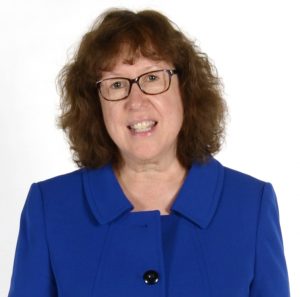September 04, 2020

Skubic
When a Mizzou Engineer began using sensors to track senior health data in assisted living facilities more than a decade ago, the goal was to someday take that technology into private homes. COVID-19 is forcing that someday to be today.
“We can’t get into assisted living facilities right now because of COVID-19 restrictions, so we’ve had to pivot a little,” said Marjorie Skubic, a professor in electrical engineering and computer science. She is also director of the MU Center for Eldercare & Rehabilitation Technology.
Skubic and colleague Marilyn Rantz, an MU curators’ professor in the Sinclair School of Nursing, have been developing senior health data sensors since the early 2000s.
The National Institutes of Health awarded funding for the latest study in 2018. Since then, researchers have been able to set up the sensors in 22 living spaces. Now the virus made assisted living facilities off limits and significantly limited building access to independent living complexes. Skubic and her team have funding available to equip a total of 40 homes with devices to track and report senior health data.
That means any older adult in Columbia can now volunteer to participate in this study.
Devices That Track Health Data
Participants will receive several devices, which the research team will set up in the home. Bed sensors installed in a mat that slides under a mattress will detect pulse, respiratory rate and restlessness. Motion sensors detect changes in behavior, such as how much time someone spends in a particular room. And depth sensors capture depth images of a body to detect changes in gait, fall risks and actual falls.
Those who volunteer for the study will also receive an Echo Show device equipped with Alexa to make it easier to receive and understand the data. Alexa is Amazon’s personal assistant, and in this case has been programmed to report health findings. The device will be synced with the sensors. So, a user can ask Alexa specific questions such as “How did I sleep?” For those not sure what to ask, Alexa can ask “yes” or “no” questions to guide them through their personal data.
Life-saving Alerts
Skubic has worked on eldercare technology for decades, and for some, it’s proven to be life-saving.
In addition to providing data, the depth computer alerts loved ones in the event of a fall. And there’s a backup plan if the fall alert doesn’t go through.
That’s what happened this summer when a depth sensor detected a fall in one participant’s home.
The alert went to a family member who did not have access to the system at the time. Brianna Markway, project manager for the eldercare center, was unable to reach the family member or participant, so she called a building manager to check on the resident. The person was taken to the hospital, quickly treated for a life-threatening injury and was able to leave the following day without long-term damage.
“Brianna was able to save this person from becoming paralyzed or worse,” Skubic said. “In this type of case, a person cannot press a button or call for help. The depth sensor detected and reported the fall.”
How to Get Involved
The MU Center for Eldercare & Rehabilitation Technology is an interdisciplinary group of faculty, staff and students. Skubic and Rantz are lead researchers, and the center includes faculty from EECS, nursing, medicine, physical therapy, occupational therapy, informatics and social work.
For the current study, the team equipped living areas with the sensors in several independent living facilities across various socioeconomic ranges. The research team has already made some changes based on their findings.
“We wanted to go into different settings to engage with consumers about what resonates with them,” Skubic said. “We developed a simpler interface as a result of the feedback.”
Now, users can scan and process information more easily. A green bar shows positive health data; a yellow bar denotes caution and a red bar indicates risk. And, instead of only showing data in areas that need improvement, users also get positive feedback such as whether their risk of falling has gone down.
To volunteer for the study, participants 65 or older must live in the city limits of Columbia.
The research team will install the health data sensors and provide instructions on how to read and use results. Participants provide occasional feedback about how they use the systems. Volunteers may also have the option to test out wearable sensors that capture health changes in and outside of the home.
The study is for 12 months, but participants may withdraw at any time.
Older adults wishing to learn more or to volunteer can contact Brianna Markway at 573-882-1859 or markwayb@missouri.edu.